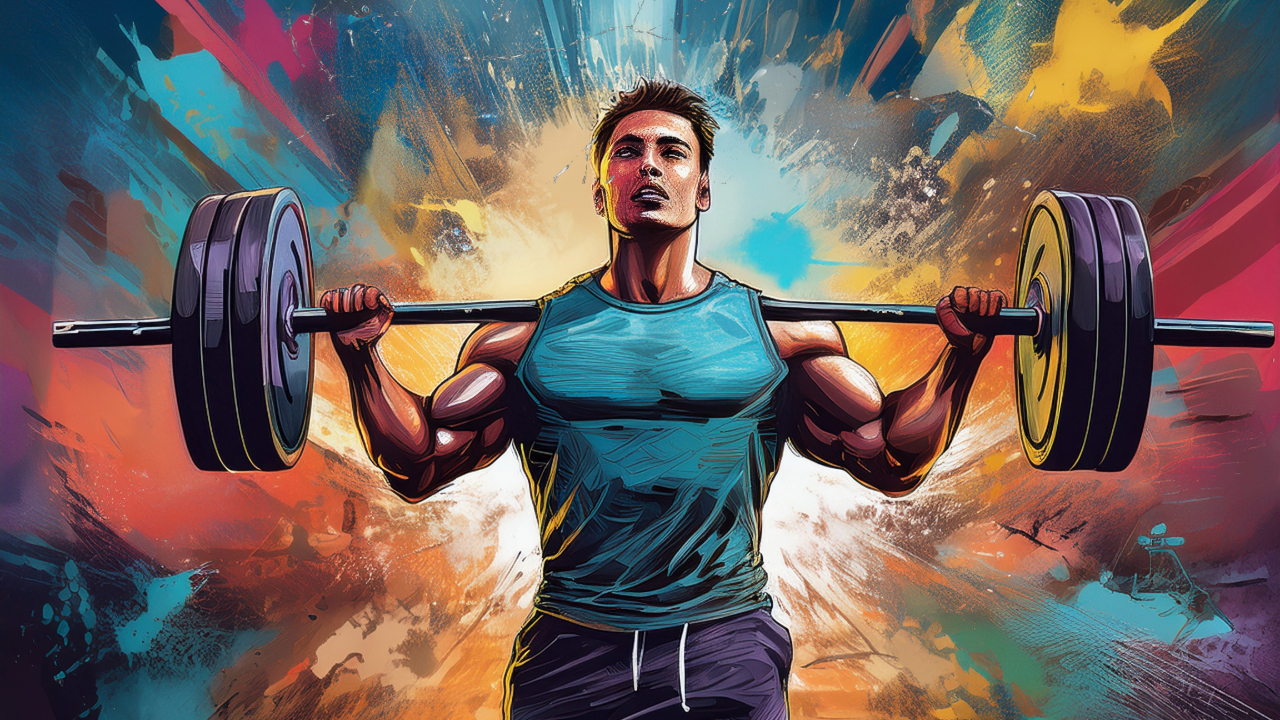Introduction
This article is a manifesto on building a strong, lean, and muscular body without the fluff of mainstream fitness advice. It shuns the complicated routines and diet myths, focusing instead on raw strength, consistency, and mental toughness. It is not just about aesthetics but about developing the warrior mentality in every aspect of life.
Rejecting Bodybuilding Lies

Magazines and influencers promote unrealistic expectations, often fueled by steroid use and misleading routines. Common bodybuilding and fitness myths include:
- Eating every 3 hours to build muscle
- Training one body part per week
- Needing supplements for gains
- Overemphasis on cardio for fat loss
Instead, natural athletes must focus on strength and simplicity, mainstream advice often ignores the reality of drug use in pro bodybuilding.
Training Fundamentals: Strength & Aesthetics Together

Natural lifters must train for both strength and aesthetics:
- Strength Training: 1-5 reps per set, focusing on heavy lifts for raw power.
- Bodybuilding Reps: 6-15 reps to build muscle size and shape.
- Combination of both is essential for a balanced physique.
Pure strength programs like Rippetoes neglect physique development and also “pump-only” bodybuilding routines are ineffective without drugs.
Workout Frequency
Its safe to say that working out 4-6 days per week and dismissing the idea of overtraining as a “loser’s excuse” is the best strategy when it comes to timing and workout frequency.
- 4 days/week minimum to build a noteworthy physique.
- 6 days/week ideal, promoting habit formation.
- Light recovery workouts are acceptable on tired days.
“3-day splits” are insufficient because the human body requires frequent stimulation to grow naturally.
Best Time to Train: Personal Optimization
Early morning workouts are for consistency, however best sessions often occur in the 7-9 PM window due to accumulated daily stress.
- Choose the time you can consistently commit to.
- Evening sessions can help relieve mental tension.
- Mornings are best for avoiding schedule disruptions.
Core Exercises

There are 8 core movements that you should focus on:
- Deadlifts
- Squats
- Bench Press
- Pullups/Chinups
- Shoulder Press
- Curls
- Triceps Extensions
- Rows
Free weights and bodyweight exercises should be priotized over machines, machines are only suitable for rehab or steroid-enhanced training.
Example Workout Structure
Workouts are divided into:
- Main Exercises: For strength (1-5 reps)
- Supplemental Exercises: For shaping and volume (8-15 reps)
A typical workout includes:
- 1-2 Main Exercises (heavy, low reps)
- 1-4 Supplemental Exercises (moderate weight, higher reps)
I encourage “auto-regulation,” adjusting intensity based on daily performance rather than rigid programs.
The Progression Model
- Singles Routine: 10 singles at 90% of the day’s 1RM, 1-minute rest between sets.
- 5×5 Routine: Progressively heavier sets, adding singles after final set to push beyond perceived limits.
This dual approach ensures strength gains while maximizing muscle stimulus.
Supplemental Work
Supplemental exercises target weak points and refine the physique:
- Chest: Dumbbell flies, dips, incline/decline presses.
- Back: Rows (bent-over, T-bar, dumbbell), pullovers.
- Arms: Cheat curls, baseball curls, triceps extensions.
- Shoulders: Scott press, lateral raises, divebomber pushups.
- Traps: Shrugs, high pulls, neck bridges.
I advise using heavier weights for foundational mass and lighter weights for precision shaping.
Diet & Nutrition
Obsession with rigid meal timing and supplement dependency is pointless, Instead:
- Whole, nutrient-dense foods (meats, eggs, vegetables, fruits).
- Adjust caloric intake based on goals:
- Skinny individuals: Caloric surplus for mass.
- Overweight individuals: Controlled deficit for fat loss.
- Fats are not the enemy; refined carbs and sugars are.
- Supplements are unnecessary for most people.
Cardio & Fat Loss
I don’t think doing typical cardio workouts is a must. Instead, I believe you can burn fat effectively by lifting weights and keeping your rest breaks short. Exercises like high-rep squats and explosive movements, such as squat jumps, also get your heart rate up, giving you the same benefits as cardio sessions.
- Strength training with short rest periods effectively burns fat.
- High-rep squats and dynamic lifts (like squat jumps) provide cardio benefits.
- Excessive cardio is counterproductive for natural muscle building.
Advanced Techniques & Variations
For those who’ve been lifting a while and want to level up, there are some tougher moves and smart variations to keep things fresh and push past plateaus.
I recommend rack deadlifts to build a thicker, stronger back, while snatch grip deadlifts are my go-to for blowing up the traps. To work on single-side strength, suitcase deadlifts do the trick. For grip strength and core stability, monkey pullups and rope pullups bring an extra challenge.
To dominate shoulder development, I suggest behind-the-neck push presses — not for beginners, but serious lifters will feel the difference. One-arm power cleans are a solid choice too, combining grip work with a bit of flair. And then there’s the classic farmers walk, a brutal but effective way to toughen up the entire body.
Rack Deadlifts for back thickness.
Snatch Grip Deadlifts for traps.
Suitcase Deadlifts for unilateral strength.
Monkey Pullups, Rope Pullups for grip and core.
Behind-the-Neck Push Press for shoulder dominance.
One-Arm Power Cleans for grip and showmanship.
Farmers Walks for total body toughness.
Rules & Training Accessories
Keep an eye on the below rules:
- Never skip a main lift.
- Avoid machines unless injured.
- Focus on progressive overload.
- Keep rest periods short.
- Push beyond comfort zones.
Training accessories are kept minimal:
- Weight belts for heavy lifts.
- Wrist straps for grip-intensive exercises.
- Minimalist footwear or barefoot for stability.
Conclusion
At its core, this article is all about self-reliance, discipline, and putting in the hard work without making excuses. I amn’t just talking about getting ripped. My idea of being a Spartan is just as much about mental toughness as it is about physical strength.
Real strength is earned bit by bit, through showing up and putting in the work every single day. Looking better — bigger muscles, leaner physique — that’s just a bonus. The real reward comes from becoming stronger.
Comfort? I see that as the enemy. Growth only happens when you lean into discomfort, when you tackle the hard stuff head-on. By living this way, I believe you won’t just build a stronger body. You’ll forge a mindset that doesn’t flinch at obstacles, no matter how big they are.




